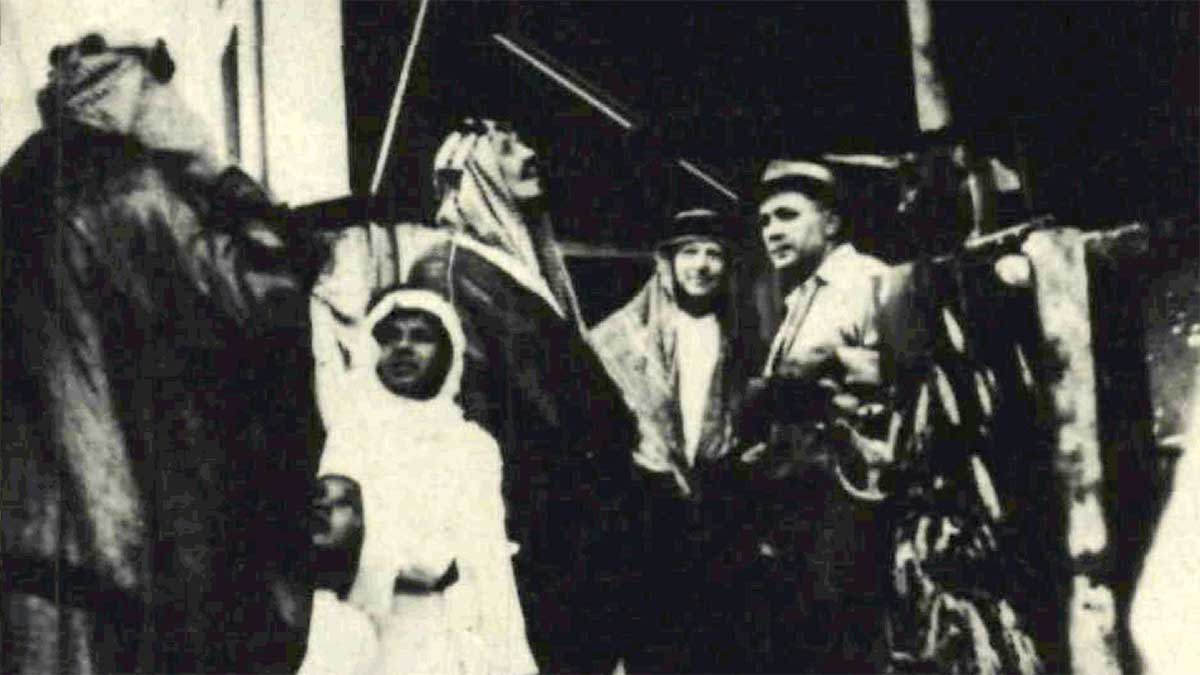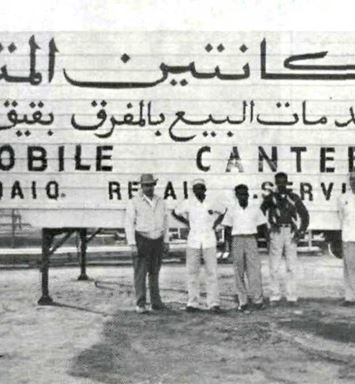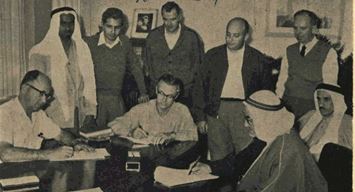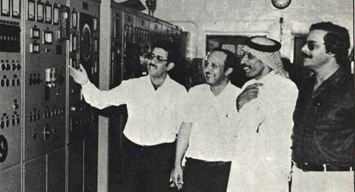This Day in History
This Day in History (1988): Marking the 50th anniversary of Well No. 7

Global March 02, 2023
Yet to be named the Prosperity Well, the site still held a hallowed place in Aramco history.
From the March 2, 1988, edition of The Arabian Sun
On this day 50 years ago, Saudi and American drillers were working a rig at a spot that today is just a few hundred meters up Dallah Road from Aramco's headquarters in Dhahran.
Despite numerous setbacks and only disappointing hydrocarbon shows, they had instructions to keep drilling, and drill they did. The following day, March 3, 1938, the deep test well struck oil in a stratum dubbed the Arab Zone.
The find, which ended a nearly five-year quest, proved monumental. It made possible the commercial development of oil in Saudi Arabia, played a key role in assuring a prosperous future for the Saudi people, and set Aramco firmly on course toward becoming the world's largest-producing oil company.
In its first five decades, the company has produced more than 53 billion barrels of crude.
Of all the thousands of wells drilled by Aramco since, lucky No. 7 is the mascot, the symbol of first success.
Today, as ever, Dammam No. 7 stands on Jabal Dhahran — the geographic name for the Dammam Dome — at the foot of a cluster of peaks called Umm ar-Rus (the mother of heads).
The Aramco community of Dhahran grew up beside the site of the original drilling camp, virtually in the shadow of Ummar-Rus, which rises up behind al-Munirah and is seen every day by thousands of Aramco employees who work at the Dhahran headquarters.
Driving south on Dallah Road toward Aramco, Well No. 7 is on the right-hand side, slightly below the road's surface.
After that March strike, consultations continued on whether to continue to drill or not. You can guess the answer. By the fall of 1938, a commercial find was officially declared under the terms of the Concession Agreement signed 5.5 years later.
"Thereafter, Dammam No. 7 flowed almost continuously for 45 years, providing a total of more than 32 million barrels of crude all by herself. She was taken out of production in 1982, but only because of low demand. Actually, she is still fully capable of turning out 1,8000 barrels a day for quite some time yet -- and without any pump," said Jim Mandaville of Government Affairs Policy and Planning.
Caption for top photo: During the first royal visit to Aramco in May 1939, His Majesty King 'Abd al-'Aziz Al Sa'ud, accompanied by Floyd Ohliger, resident manager, second from right, visited the discovery well, Dammam No. 7. During his visit, the King also opened the valve at Ras Tanura that released the first Saudi shipment of crude oil to a tanker ship.
Also on this date
2017 — The elements Moscovium, Tennessine, and Oganesson are added to the periodic table
2012 — A tornado outbreak across the southern U.S. kills 40
1998 — Data sent from the Galileo spacecraft shows that Jupiter's moon Europa has a liquid ocean under a thick crust of ice
1992 — Armenia, Azerbaijan, Kazakhstan, Kyrgyzstan, Moldova, San Marino, Tajikistan, Turkmenistan, and Uzbekistan all join the United Nations
1990 — Nelson Mandela is elected deputy President of the African National Congress
1983 — Compact discs and players are released for the first time in the United States and other markets. Before 1983, they had been available exclusively in Japan.
1978 — Charlie Chaplin's coffin is stolen from his grave in Switzerland
1969 — The France, the first test flight of the Anglo-French Concorde is conducted
1962 — Wilt Chamberlain sets the single-game scoring record in the NBA by scoring 100 points
1949 — James Gallagher lands his B-50 Superfortress Lucky Lady II in Fort Worth, Texas, after completing the first nonstop around-the-world airplane flight. It took him 94 hours and 1 minute to complete.
1917 — Puerto Ricans are granted U.S. citizenship
1901 — Carnegie Steel Company and Federal Steel Company merge to become the United States Steel Corporation, the world's first company worth more than $1 billion
1882 — Queen Victoria narrowly escapes an assassination attempt by Roderick Maclean in Windsor
1877 — Rutherford B. Hayes is declared the winner of the 1876 presidential election, even though Samuel J. Tilden won the popular vote
1836 — Texas declares independence from Mexico
1797 — The Bank of England issues the first one-pound and two-pound bank notes
1657 — The Great Fire of Meireki begins in Edo (modern-day Tokyo), Japan, causing more than 100,000 deaths over three days






